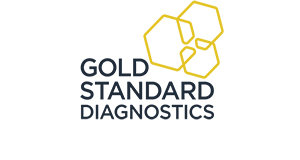NovaLisa Toxoplasma gondii IgG quantitative, ELISA Kit
Toxoplasma gondii IgG quantitative, ELISA Kit
Artikelnummer
NOVTOXG0460
Verpackungseinheit
96 Tests
Hersteller
Gold Standard Diagnostics
Verfügbarkeit:
wird geladen...
Preis wird geladen...
Toxoplasma gondii is a ubiquitous protozoon that has a worldwide distribution. This obligate intracellular parasite can infect humans as well as virtually all warm-blooded animals, including mammals and birds. The life cycle of T. gondii is facultatively heteroxenous. Intermediate hosts are probably all warm-blooded animals including most livestock, and humans. Definitive hosts are members of the family Felidae, for example domestic cats.There are three infectious stages in the life cycle of T. gondii, i.e. tachyzoites, bradyzoites (in tissue cysts), and sporozoites (in sporulated oocysts). All three stages are infectious for both intermediate and definitive hosts.T. gondii infections may be acquired mainly via one of the following routes: by oral ingestion of infectious oocysts from the environment, by oral ingestion of tissue cysts contained in raw or undercooked meat of intermediate hosts, or by transplacental transmission of tachyzoites.While infection with T. gondii in humans is very common, clinical disease is largely confined to risk groups. Most T. gondii infections in immunocompetent humans are asymptomatic.However, if first contracted during pregnancy, T. gondii may be transmitted to the foetus. Congenital toxoplasmosis may cause abortion, neonatal death, or foetal abnormalities with detrimental consequences for the foetus. If not treated, the risk of intrauterine infection of the foetus increases during pregnancy.
| Artikelnummer | NOVTOXG0460 |
|---|---|
| Hersteller | Gold Standard Diagnostics |
| Hersteller Artikelnummer | TOXG0460 |
| Verpackungseinheit | 96 Tests |
| Mengeneinheit | PAK |
| Haltbarkeit | 18 Monate |
| Specimen | Plasma, Serum |
| CE-IVD | ja |
| Produktinformation (PDF) | Download |
| MSDS (PDF) |
|

 English
English





